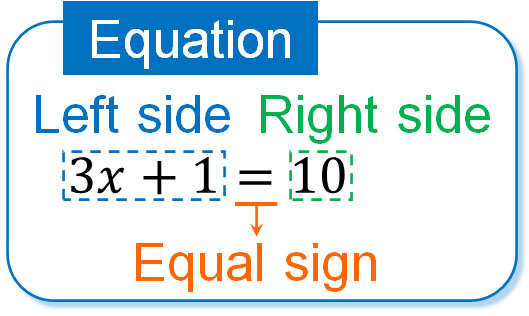Understanding the use of the transposition method
The word transposition means shifting a variable or a constant term from one side of an equation to another side of an equation. This method is used to solve sums of linear equations.
While using the transposition method, we should simplify the equation into its simplest form and then, shift the terms containing the variables or the same variables to the other side of the equation.
In the transposition method, whenever we shift the variables from one side of the equation to another side of the equation, the sign before the variable changes.
+ sign will become —, that is, addition becomes subtraction when it goes to the other side of the equation.
— sign will become +, that is, subtraction becomes addition when it goes to the other side of the equation.
X sign will become ÷, that is, multiplication becomes division when it goes to the other side of the equation.
÷ sign will become X, that is, division becomes multiplication when it goes to the other side of the equation.
To sum up - on changing sides, the addition sign will become subtraction; the subtraction will become an addition; multiplication will become division, and division will become multiplication.
Procedures for using the transposition method in linear equations:
We should use the following steps for using the transposition method in the linear equations:
Step 1: We need to identify the variables and the constant terms of the given equation.
Step 2: We will divide the equation into L.H.S & R.H.S (here, LHS means left-hand side and RHS means the right-hand side of the given equation)
Step 3: We will shift the ‘constants’ and ‘variables’ to their like side and we will also change the sign of the given constant and variables likewise. We will shift it in such a way that makes our equation easy to solve.
Step 4: The result which will be obtained after solving both sides of the equations will be the result of the given linear equation.
Problem Sum 1: Using the rules of linear equations, solve: 4y + 19 = 59
Solution:
Step 1: The variable in this given equation is 4y and the constant terms are 19 and 59.
Step 2: We will divide the given equation into L.H.S & R.H.S. In our case, you would notice that L.H.S = 4y + 19 and R.H.S = 59.
Step 3: We will ship the constants and variables to their like side and we will change the sign of the constant and variables likewise.
4y + 19 = 59
4y = 59 - 19 (we have shifted 19 where 59 (on RHS) exists, so the positive sign will become negative)
4y= 40
y= 40/ 4 (The relation between 4 and y was multiplication. Therefore, when we transpose
4 to 40 it changed its sign. Please note that ‘×’ has changed to ‘÷’).
Step 4: y= 40 ÷ 4 =10. Therefore, we get the answer of the linear equation as y = 4.
Problem sum 2:
The sum of the two numbers is 105. If one number is more than 15 than the other number, then find both the numbers.
Solution:
Let us start by assuming the first number as variable ‘y’. So as per the question (one number is more than 15 than the other number), the second number will automatically be y+15.
The question also says that the sum of both numbers is 105.
So, the equation will be y + (y + 15) = 105.
y + (y + 15) = 105.
y + y = 105 - 15 (shifting +15 to 105, it will become - 15).
2y = 90.
Therefore, y = 90 ÷ 2 (The relation between y and 2 was multiplication so when 2 changed its side, it became a division).
y= 45.
The first number is y = 45 and second number will be y+15 = 45 + 15 = 60.
Hence, we get the solution of the linear equation with the first number as 45 and the second number as 60.
Problem Sum 3: Solve t ÷ 2·4 = 1·2 ÷ 3.6
Solution:
We can write t ÷ 2·4 = 1·2 ÷ 3.6 as t / 2.4 = 1.2 / 3.6.
In the next step, you can take 2.4 to the other side of the equation, that is, RHS.
Thus, we shall get:
t = (2.4 X 1.2) ÷ 3.6 (The relation between t and 2.4 is of division but when it changes sides, it will become multiplication)
t = 2.88 ÷ 3.6 (After multiplying 2.4 and 1.2, we get 2.88).
t = 0.8
You can learn more about the linear equation and its properties by checking out our Nobel learn videos.


